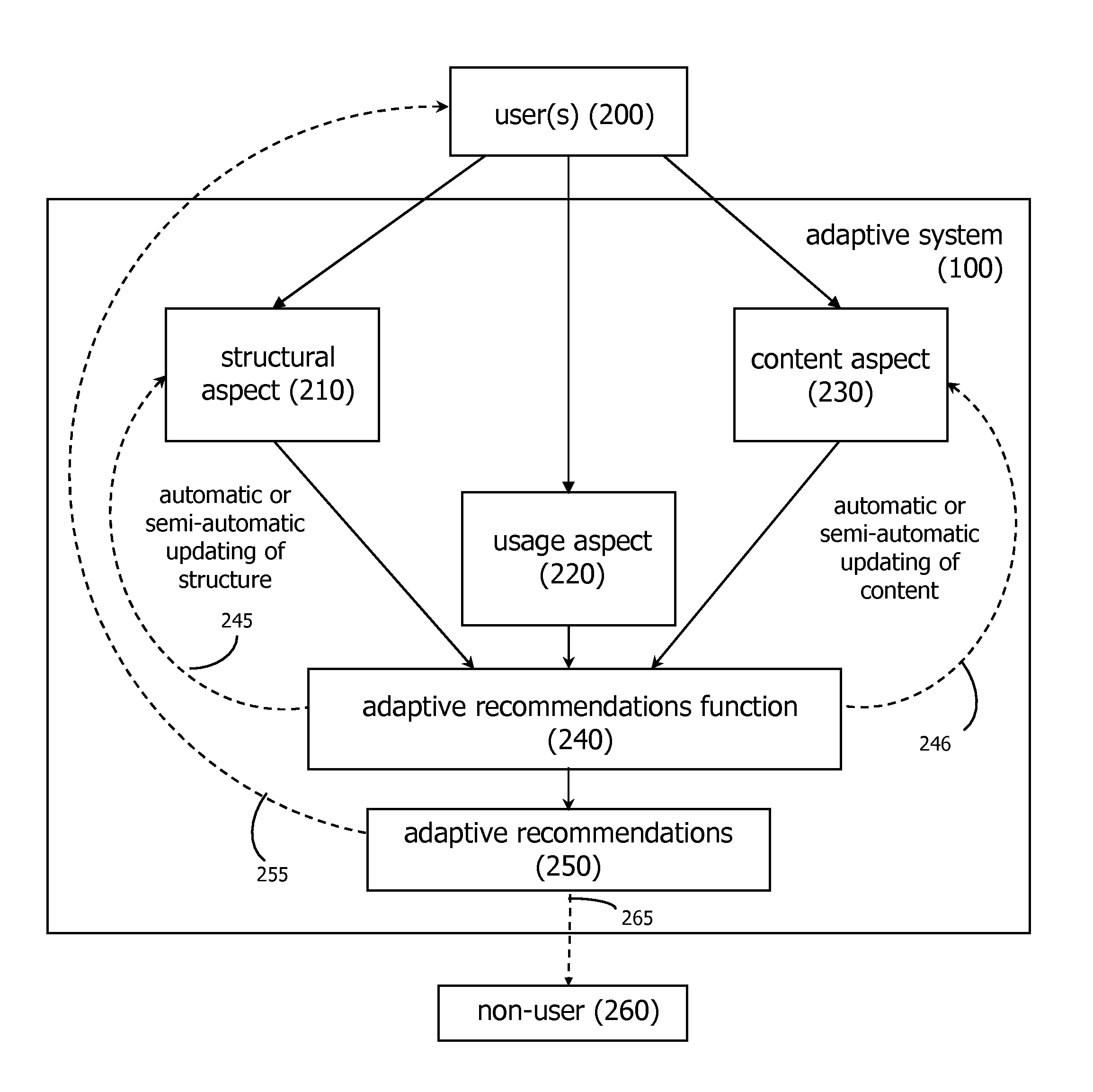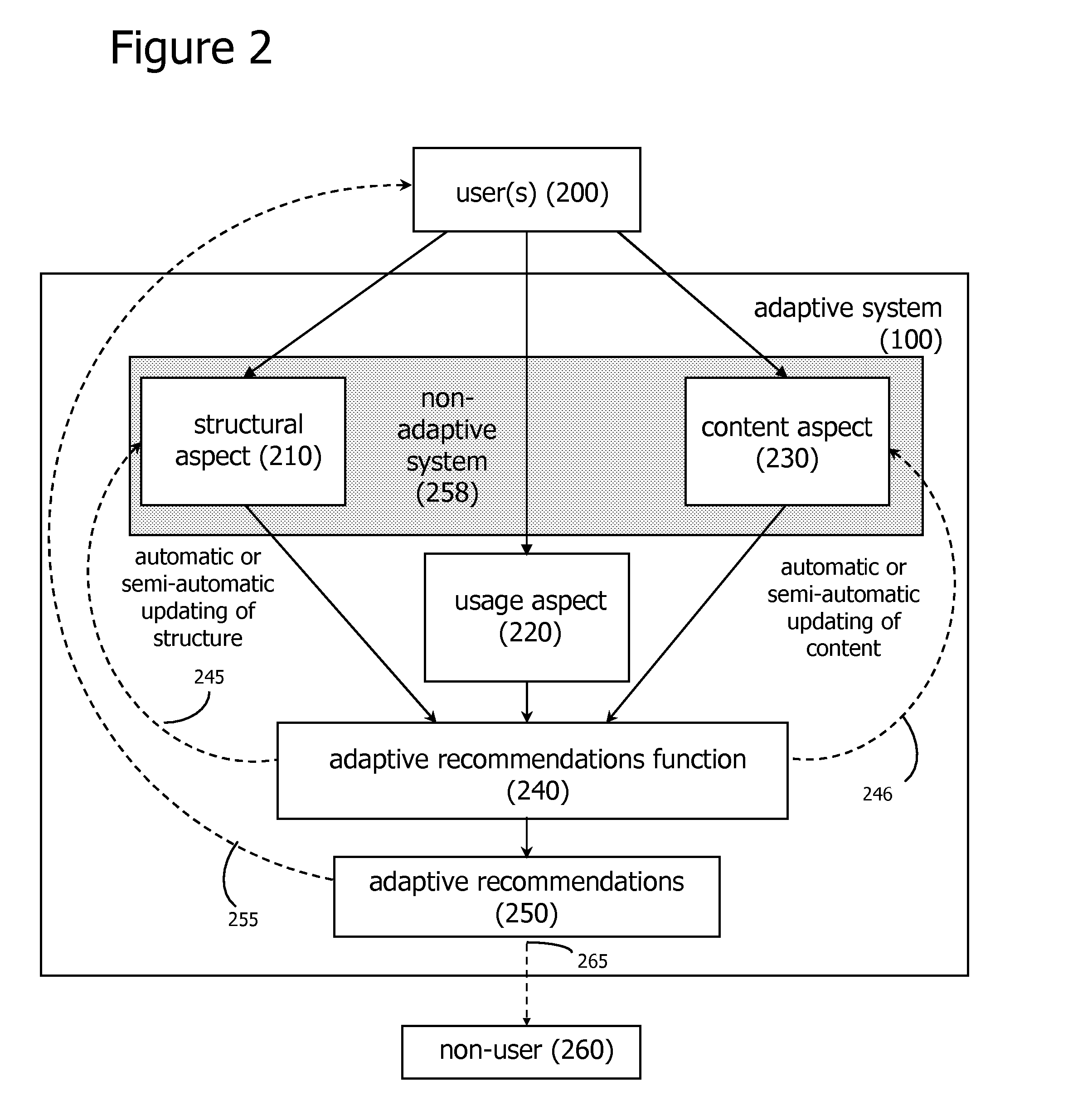Affinity propagation in adaptive network-based systems
a network-based system and affinity propagation technology, applied in the field of software programs, can solve the problems of arbitrariness in the outcome of the clustering process, prohibitively time-consuming, and the inability to automatically cluster large networks of objects, and achieve the effect of efficient and adaptive clustering computer-based and facilitating navigation of information or knowledge bases
- Summary
- Abstract
- Description
- Claims
- Application Information
AI Technical Summary
Problems solved by technology
Method used
Image
Examples
Embodiment Construction
[0055]In accordance with the embodiments described herein, an adaptive system, an adaptive recombinant system, and methods for establishing the systems are disclosed. The adaptive system includes algorithms for tracking user interactions with a collection of system objects, and generates adaptive recommendations based on the usage behaviors associated with the system objects. The adaptive recommendations may be explicitly represented to the user or may be used to automatically update the collection of system objects and associated relationships. In either case, the collection of objects and associated relationships become more useful to the user over time.
[0056]The adaptive recombinant system, which includes the adaptive system, may further be syndicated to other computer applications, including other adaptive systems. The adaptive recombinant system may recombine and re-syndicate indefinitely. Both the adaptive system and the adaptive recombinant system may be based on a fuzzy netw...
PUM
 Login to View More
Login to View More Abstract
Description
Claims
Application Information
 Login to View More
Login to View More - R&D
- Intellectual Property
- Life Sciences
- Materials
- Tech Scout
- Unparalleled Data Quality
- Higher Quality Content
- 60% Fewer Hallucinations
Browse by: Latest US Patents, China's latest patents, Technical Efficacy Thesaurus, Application Domain, Technology Topic, Popular Technical Reports.
© 2025 PatSnap. All rights reserved.Legal|Privacy policy|Modern Slavery Act Transparency Statement|Sitemap|About US| Contact US: help@patsnap.com



